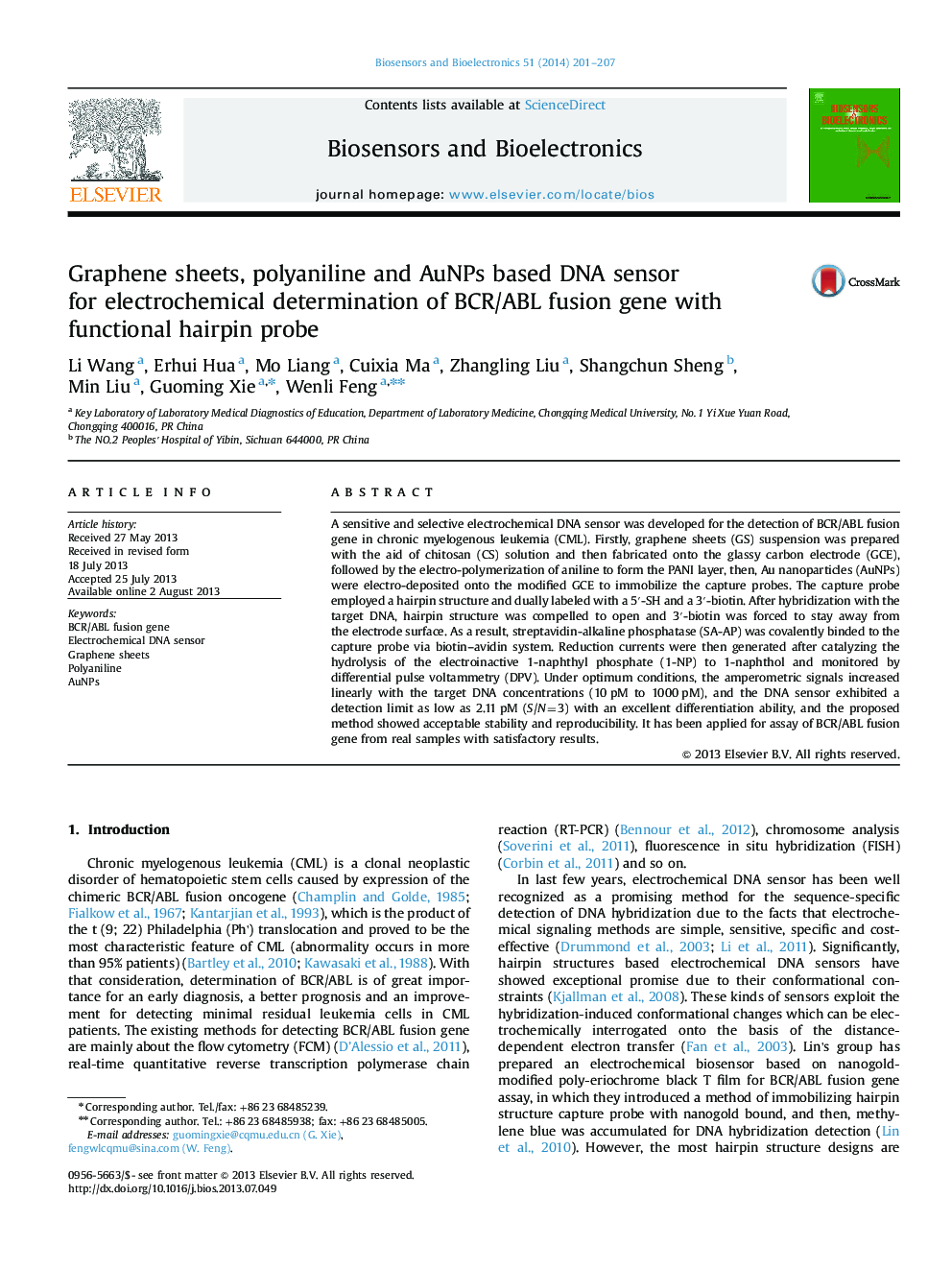| کد مقاله | کد نشریه | سال انتشار | مقاله انگلیسی | نسخه تمام متن |
|---|---|---|---|---|
| 866567 | 1470980 | 2014 | 7 صفحه PDF | دانلود رایگان |

• Graphene sheets, polyaniline and AuNPs were reasonably used and assembled to efficiently improve the performance of the DNA sensor.
• Tri-amplification strategies of AuNPs/PANI/CS-GS, biotin–avidin signaling cascade amplification and alkaline phosphatase was adopted to obtain high determination sensitivity.
• The DNA sensor successfully detected the PCR amplified products at about 600 bp with satisfactory results.
• The proposed method could be extended to detect different DNA sequences.
A sensitive and selective electrochemical DNA sensor was developed for the detection of BCR/ABL fusion gene in chronic myelogenous leukemia (CML). Firstly, graphene sheets (GS) suspension was prepared with the aid of chitosan (CS) solution and then fabricated onto the glassy carbon electrode (GCE), followed by the electro-polymerization of aniline to form the PANI layer, then, Au nanoparticles (AuNPs) were electro-deposited onto the modified GCE to immobilize the capture probes. The capture probe employed a hairpin structure and dually labeled with a 5′-SH and a 3′-biotin. After hybridization with the target DNA, hairpin structure was compelled to open and 3′-biotin was forced to stay away from the electrode surface. As a result, streptavidin-alkaline phosphatase (SA-AP) was covalently binded to the capture probe via biotin–avidin system. Reduction currents were then generated after catalyzing the hydrolysis of the electroinactive 1-naphthyl phosphate (1-NP) to 1-naphthol and monitored by differential pulse voltammetry (DPV). Under optimum conditions, the amperometric signals increased linearly with the target DNA concentrations (10 pM to 1000 pM), and the DNA sensor exhibited a detection limit as low as 2.11 pM (S/N=3) with an excellent differentiation ability, and the proposed method showed acceptable stability and reproducibility. It has been applied for assay of BCR/ABL fusion gene from real samples with satisfactory results.
Journal: Biosensors and Bioelectronics - Volume 51, 15 January 2014, Pages 201–207